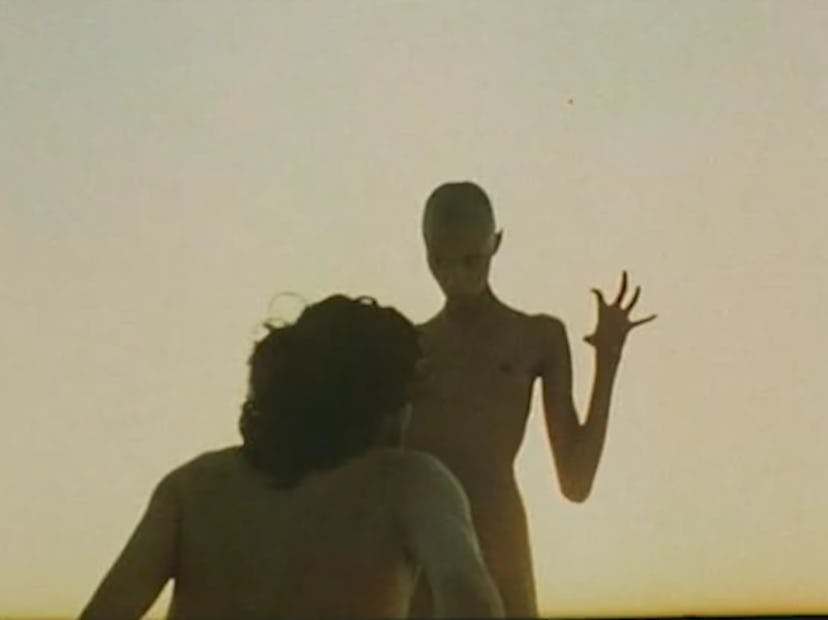A Look at Nan Goldin’s New Work, Which Grapples With Addiction

Nan Goldin has returned to London after almost two decades.
But first: If you happened to be at the Guggenheim in New York City on one crowded February evening last winter, you would have witnessed one of the most confrontational, hauntingly honest pieces of activism in recent history: Nan Goldin—whose work is in the permanent collection of the institution—had taken over the main floor, enlisting a crowd of fellow protesters to send thousands of tiny “prescription” flyers down from the upper levels of the museum. Each read: “If OxyContin is uncontrolled, it is highly likely that it will eventually be abused… How substantially would it improve our sales?”
*Sirens*, 2019. Courtesy the Nan Goldin and Marian Goodman Gallery New York, Paris and London.
They were quoting communications from executives at Purdue Pharma (the OxyContin producing company owned by the Sackler family, who are substantial benefactors of the Guggenheim, though the museum has said it will no longer accept their gifts) in a lawsuit brought forward by the Massachusetts Attorney General. And they were doing so as vividly as possible: Activists also rolled out banners reading “SHAME ON SACKLER,” “400,000 DEAD,” and “200 DEAD EACH DAY,” while some laid prostrate on the Guggenheim’s floor, surrounded by the flyers, and pill bottles.
Goldin herself is a recovering opioid addict; she was prescribed OxyContin for tendonitis in 2014, and developed an addiction that kept her inside her house for nearly three years.
After recovering, she founded Prescription Addiction Intervention Now (PAIN), which has successfully staged protests along the lines of the die-in at the Guggenheim ever since. (Even after Goldin was arrested this past August, for protesting outside of Governor Cuomo’s New York office.)
Addiction nearly derailed Goldin’s career. But as her first solo show since 2002 in the United Kingdom opens at the London branch of the the Marian Goodman Gallery today, those days are in the past.
Ivy on the way to Newbury St., Boston Garden, Boston, 1973. Courtesy the Nan Goldin and Marian Goodman Gallery New York, Paris and London.
The exhibition draws in works from Goldin’s past; The Other Side (1994-2019), for example, is a tribute to trans beauty and gender fluidity. It has never been shown publicly. Additionally, and notably, three brand new pieces are introduced, including Salome (2019), a video that explores themes of seduction and revenge through Biblical references.
As for the other two new works—Sirens and Memory Lost—they both deal with the deeply insular elements of addiction. Sirens (2019) is a film made from found video footage—the first time Goldin has worked in this manner—based on the Greek myth of the creatures that drew sailors to their deaths at sea. But, instead of a phantom on a rock, the siren in this case is OxyContin.
*Memory Lost*, 2019. Courtesy the Nan Goldin and Marian Goodman Gallery New York, Paris and London.
Memory Lost (2019) is arguably one of Goldin’s most personal works since the Ballad of Sexual Dependency, the artist’s landmark visual diary from 1979-1986. It’s a memorial to Goldin’s years lost to addiction, and the ways in which substance abuse alters and takes hold of one’s own memories—a bleak look into the past that doubles as a first, promising look at Goldin’s practice in the future.
The exhibition, titled Sirens, runs through January 11, 2020.
Greer modeling jewelry, NYC, 1985. Courtesy the Nan Goldin and Marian Goodman Gallery New York, Paris and London.
Related: Nan Goldin’s Notorious New York of the 80’s, Revisited